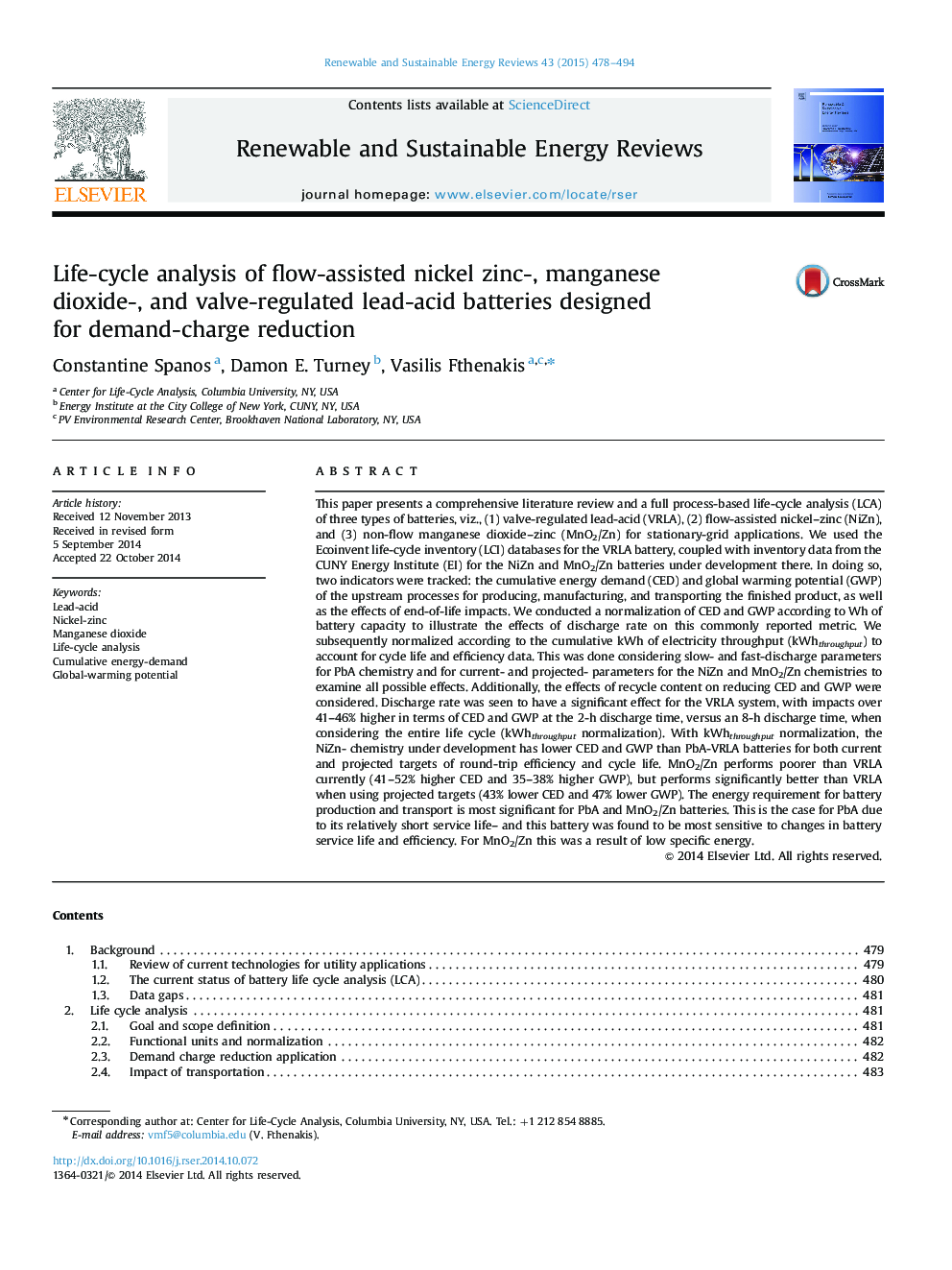| Article ID | Journal | Published Year | Pages | File Type |
|---|---|---|---|---|
| 8117695 | Renewable and Sustainable Energy Reviews | 2015 | 17 Pages |
Abstract
This paper presents a comprehensive literature review and a full process-based life-cycle analysis (LCA) of three types of batteries, viz., (1) valve-regulated lead-acid (VRLA), (2) flow-assisted nickel-zinc (NiZn), and (3) non-flow manganese dioxide-zinc (MnO2/Zn) for stationary-grid applications. We used the Ecoinvent life-cycle inventory (LCI) databases for the VRLA battery, coupled with inventory data from the CUNY Energy Institute (EI) for the NiZn and MnO2/Zn batteries under development there. In doing so, two indicators were tracked: the cumulative energy demand (CED) and global warming potential (GWP) of the upstream processes for producing, manufacturing, and transporting the finished product, as well as the effects of end-of-life impacts. We conducted a normalization of CED and GWP according to Wh of battery capacity to illustrate the effects of discharge rate on this commonly reported metric. We subsequently normalized according to the cumulative kWh of electricity throughput (kWhthroughput) to account for cycle life and efficiency data. This was done considering slow- and fast-discharge parameters for PbA chemistry and for current- and projected- parameters for the NiZn and MnO2/Zn chemistries to examine all possible effects. Additionally, the effects of recycle content on reducing CED and GWP were considered. Discharge rate was seen to have a significant effect for the VRLA system, with impacts over 41-46% higher in terms of CED and GWP at the 2-h discharge time, versus an 8-h discharge time, when considering the entire life cycle (kWhthroughput normalization). With kWhthroughput normalization, the NiZn- chemistry under development has lower CED and GWP than PbA-VRLA batteries for both current and projected targets of round-trip efficiency and cycle life. MnO2/Zn performs poorer than VRLA currently (41-52% higher CED and 35-38% higher GWP), but performs significantly better than VRLA when using projected targets (43% lower CED and 47% lower GWP). The energy requirement for battery production and transport is most significant for PbA and MnO2/Zn batteries. This is the case for PbA due to its relatively short service life- and this battery was found to be most sensitive to changes in battery service life and efficiency. For MnO2/Zn this was a result of low specific energy.
Related Topics
Physical Sciences and Engineering
Energy
Renewable Energy, Sustainability and the Environment
Authors
Constantine Spanos, Damon E. Turney, Vasilis Fthenakis,
